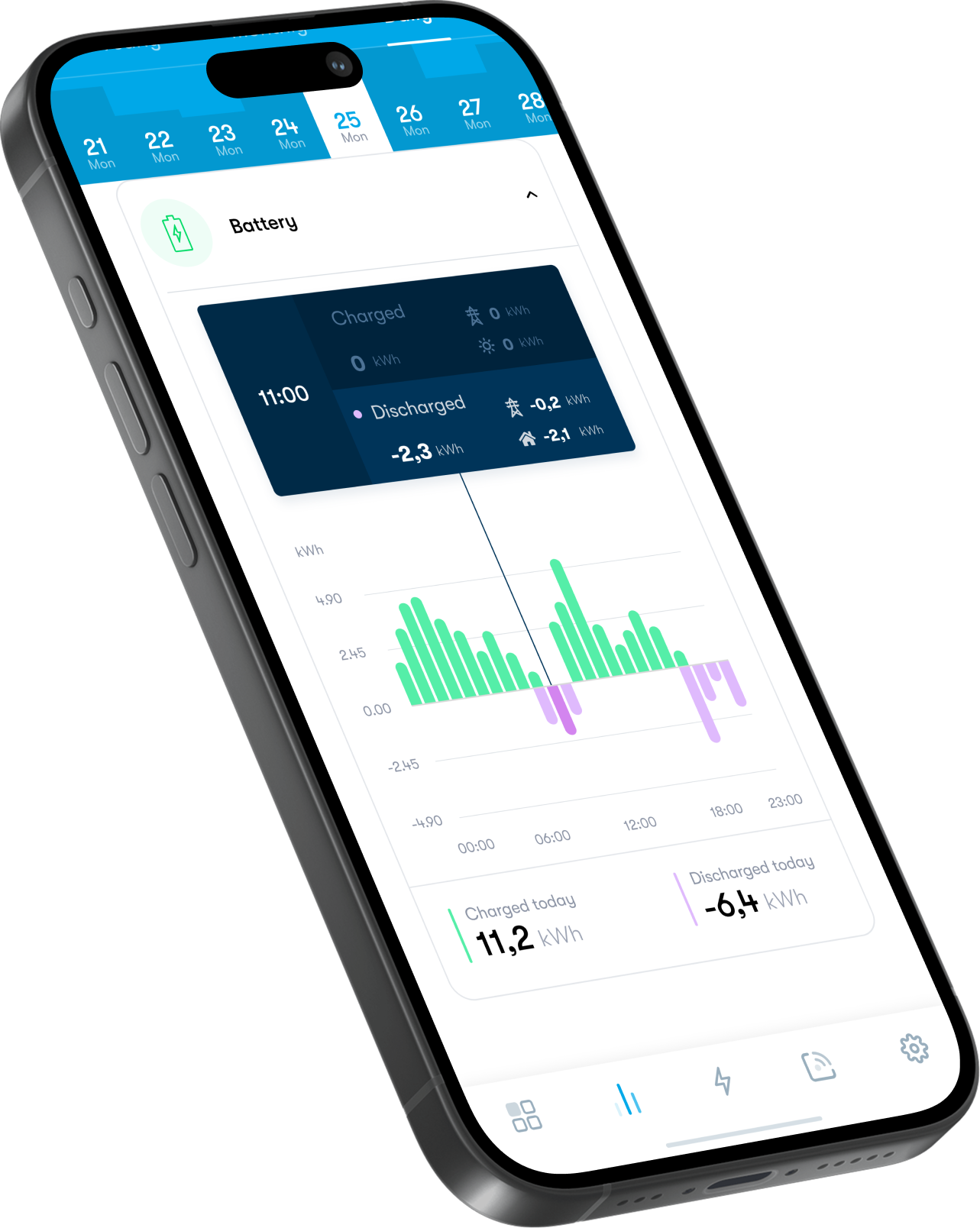
Context & Objective
Greenely, a digital electricity company, planned to launch their first home battery control feature in their app. The challenge was to ensure the feature was intuitive, useful, and trustworthy before releasing the Minimum Lovable Product (MLP).
My Role
I worked as the UX Researcher, responsible for:
- Designing the research plan and test script
- Recruiting and screening six representative participants
- Moderating interviews and usability tests
- Synthesizing findings through affinity mapping
- Presenting prioritized recommendations to Product and Design
Collaborators:
Lee Georges – Notes & Design,
Pierre Fosto – Product Management
Method & Exploration
Test prototype
Designed a first prototype that represented battery behavior using positive and negative value stacks to distinguish charging vs. discharging.
Visual Cues
Experimented with visual cues—icons, text labels, and colored indicators—to help users instantly grasp directionality and data sources.
Essential Information
Selected the most essential information to display within the graph module without overwhelming users.

Key Design Evolution
Through iterative refinement, the final solution incorporated:
Text labels for states
Charging / Discharging icons were removed for clarity.
A light indicator
A small light indicator beside the labels to highlight the currently selected state.
Visual differentiation in stack colors
making selected segments slightly darker for emphasis.
display of data flows
clean display of data flows, clearly showing energy sources and destinations within the same graph module.

Outcome & Impact
1
Clarity & Efficency
After 50+ iterations, the final history graph was both visually clear and functionally effective.
2
Intuitive Behaviour
Internal usability feedback indicated that non-experts could quickly understand battery behavior with minimal instruction.
3
Production
The revised graph design was accepted into Greenely’s app, improving user comprehension of battery data over time.
Reflection
This project reinforced the importance of:
- Extensive iterating—small tweaks in visual presentation can significantly improve understanding.
- Balancing visual clarity and data accuracy, especially for complex bi-directional information.
- Validating design with real users, even within cross-functional team settings, to ensure concepts translate beyond the designer’s perspective.Synthesizing findings through affinity mapping